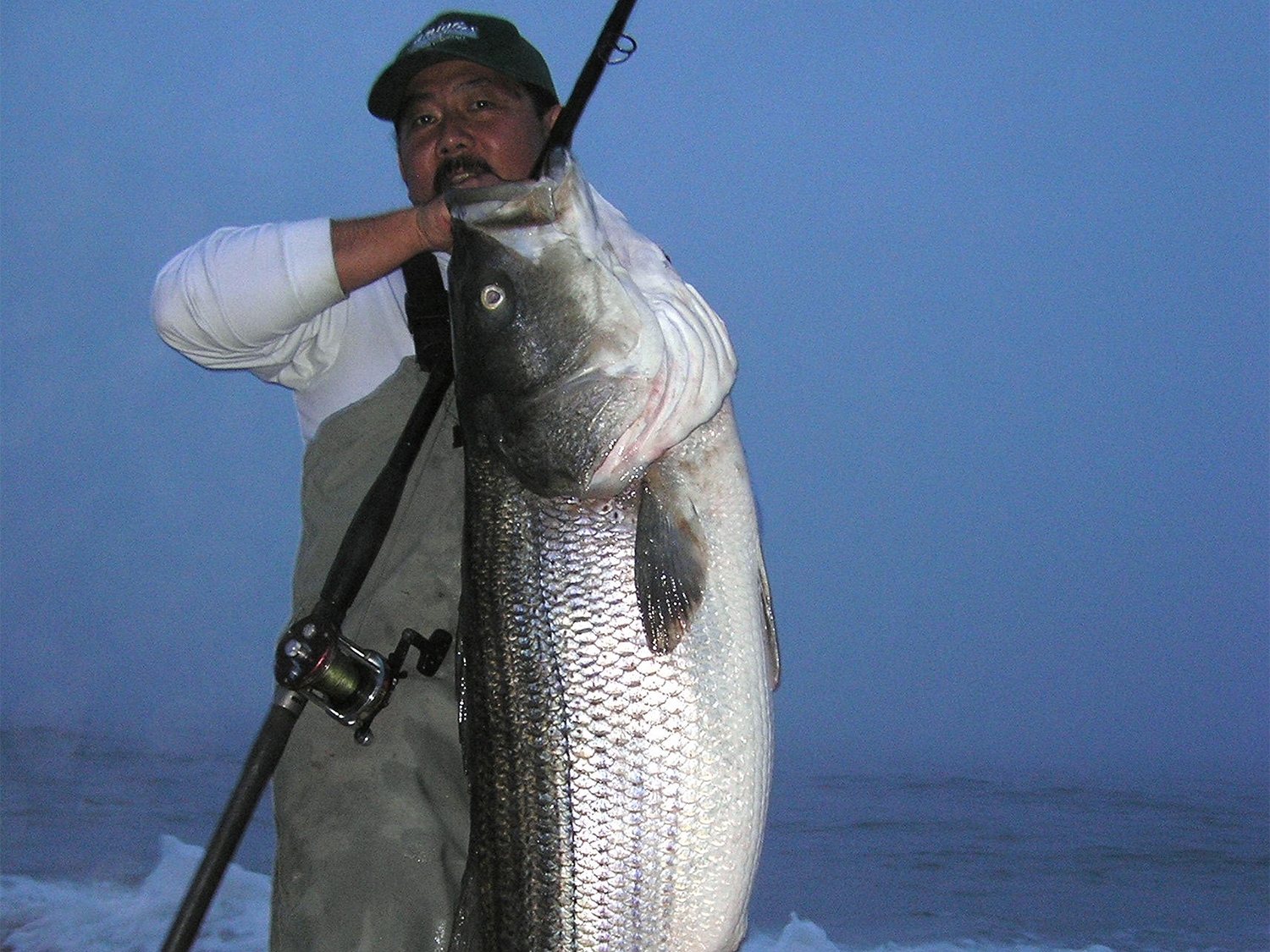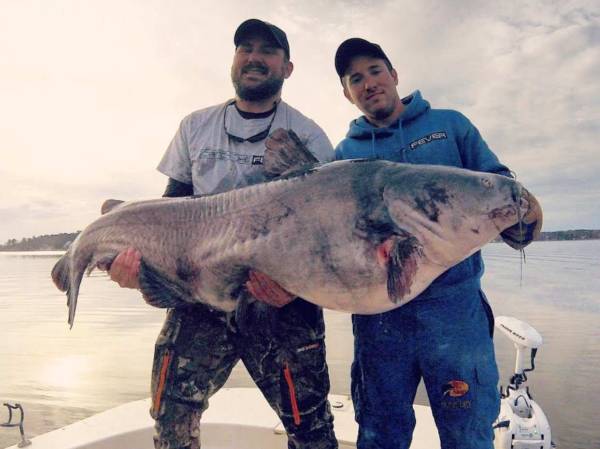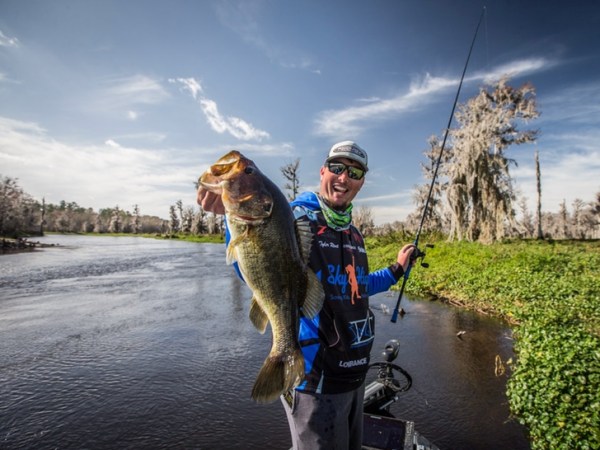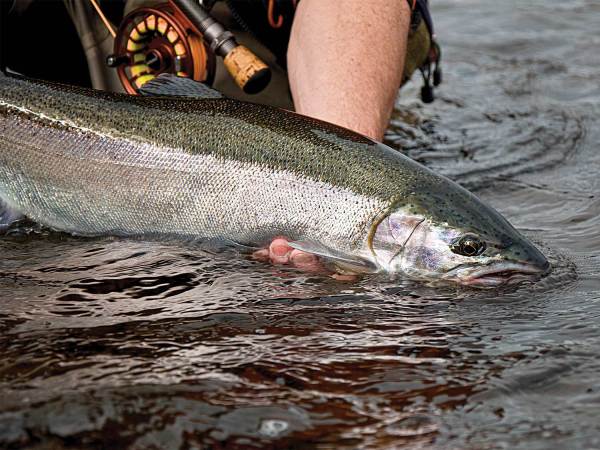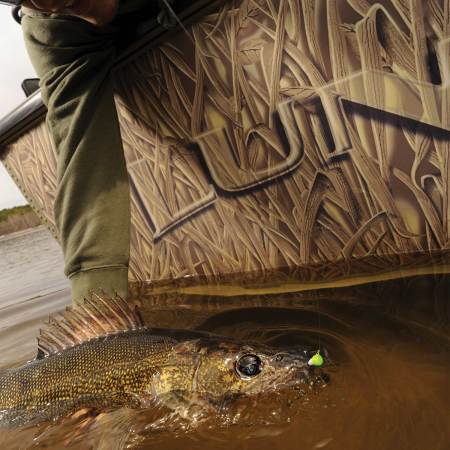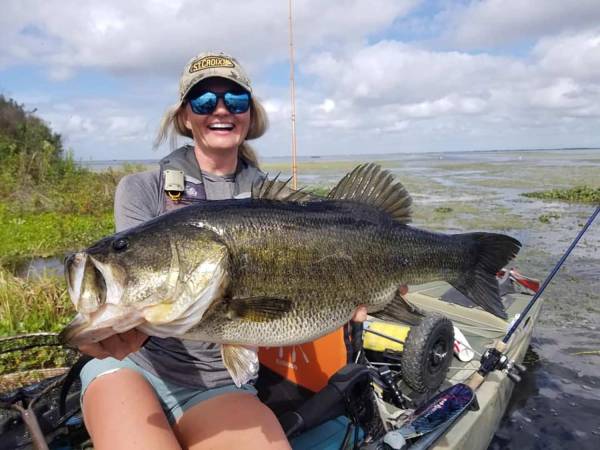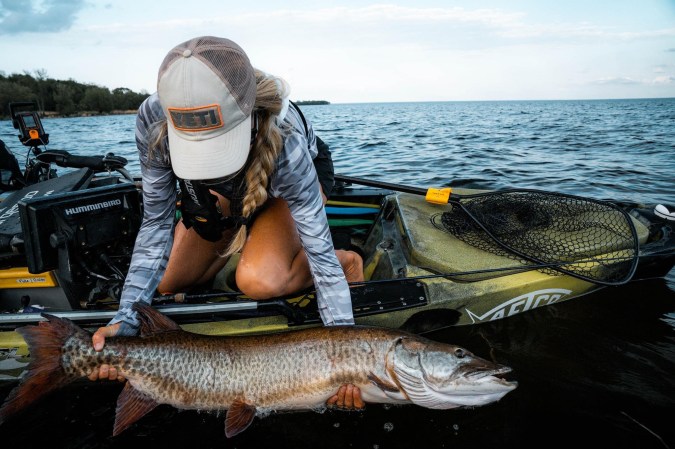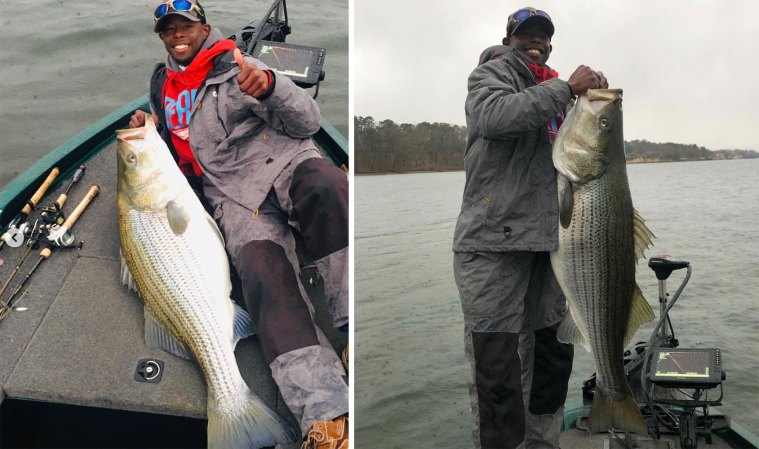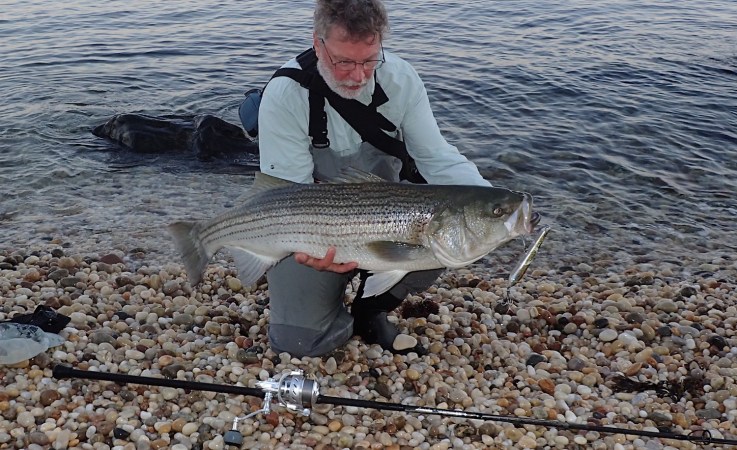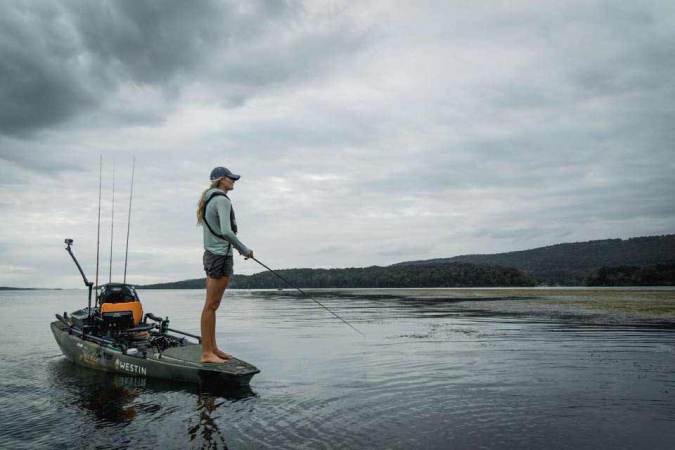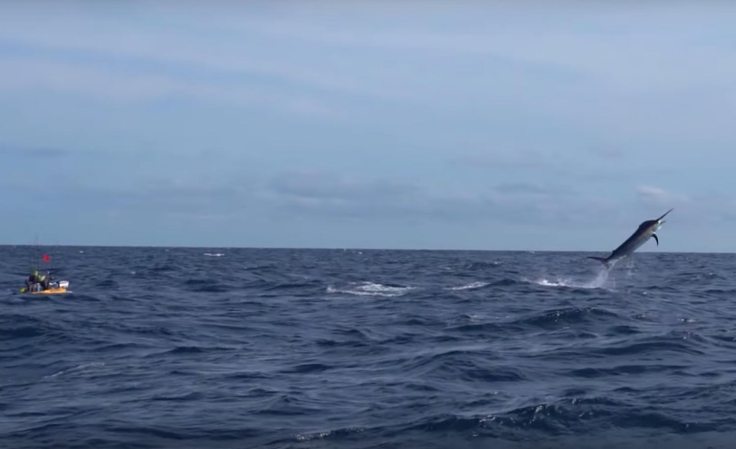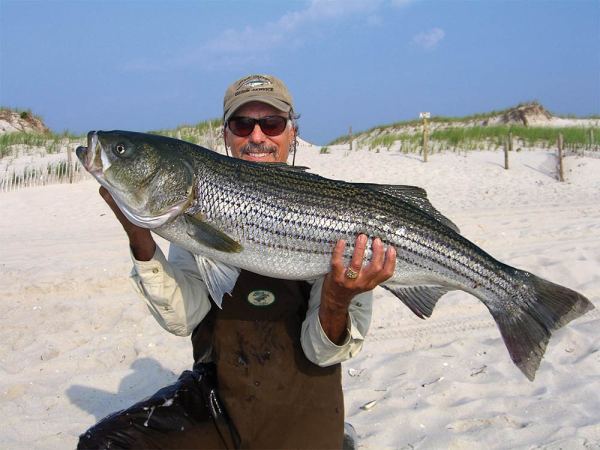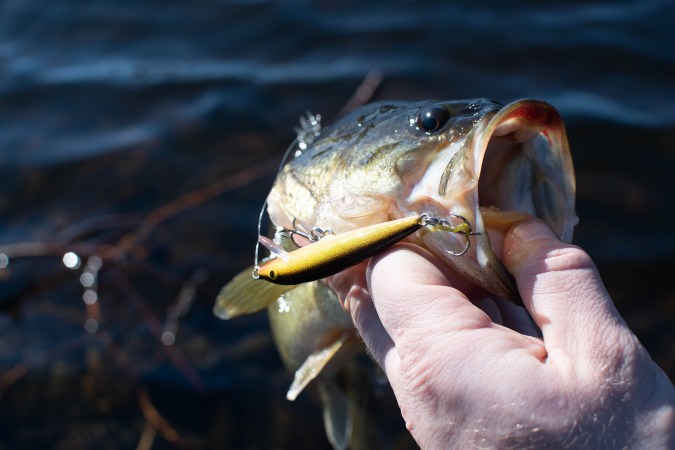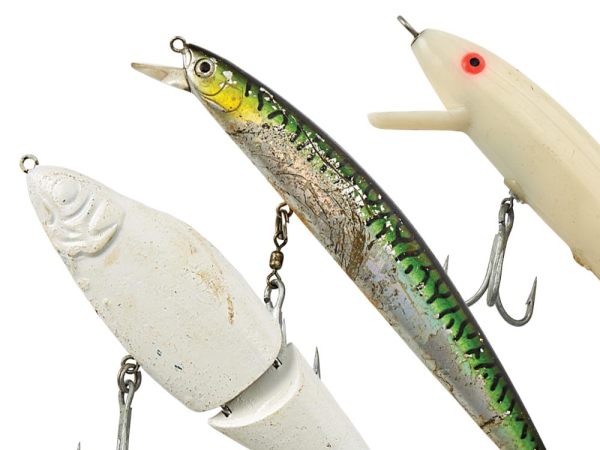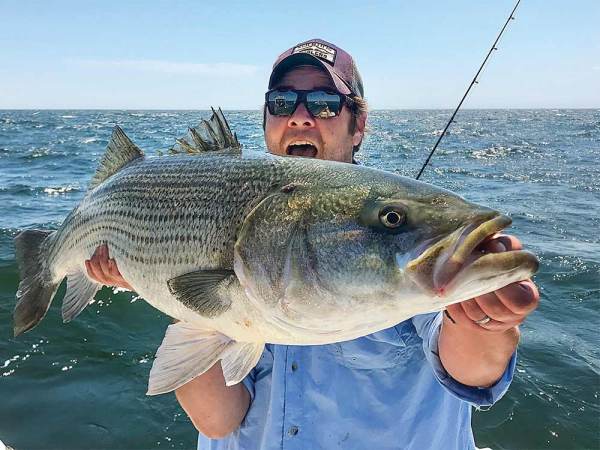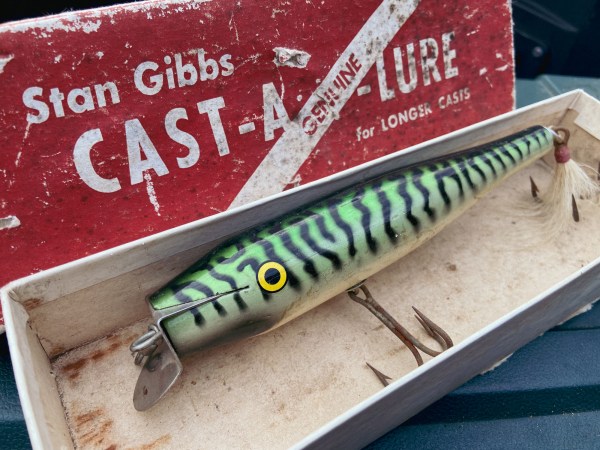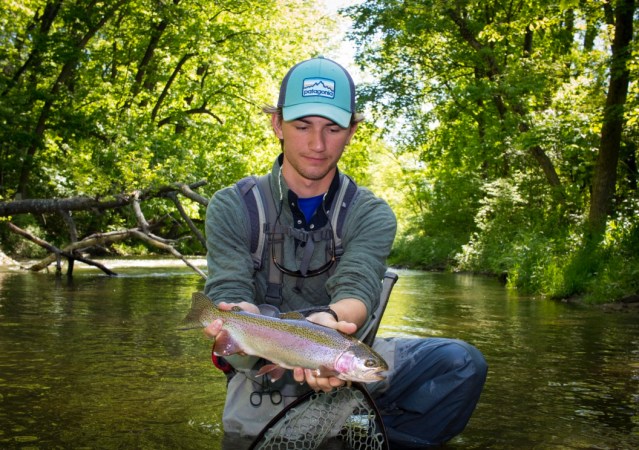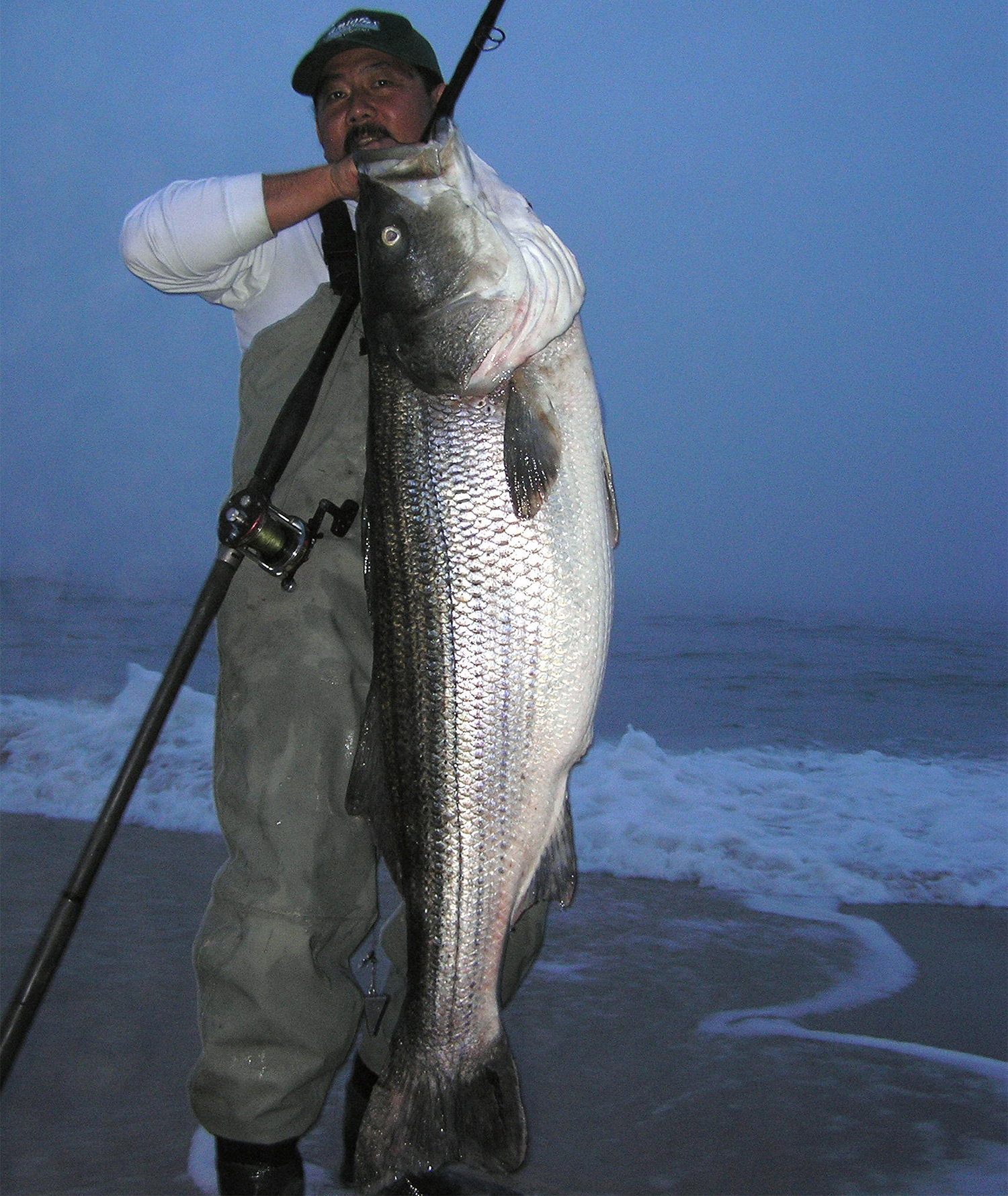
“Crazy” Alberto Knie is nothing short of a fishing legend. The founder and president of Tactical Anglers, Inc. (Creative Innovative Fishing Products), Knie is a surf fishing savant. He holds the International Game Fish Association 8-pound-test record for striped bass with a 45.5-pound surf-caught giant that he took in Shinnecock, N.Y. on May 15, 2004. But that’s not nearly his biggest surf-caught striper. He’s taken an astounding nine stripers weighing more than 50 pounds and two that weighed more than 60.
1. Outdoor Life: What’s the best way for beginning striper surf fishermen to size up new water?
Alberto Knie: Studying new waters begins with understanding the striped bass migration and how it relates to local grounds. The second key is to pay close attention to the available baitfish and then learn how to utilize the match-the-hatch theories in ways of artificial lure presentations. Another item that I find invaluable is to keep a log book which allows both beginning and seasoned anglers to sharpen their skills to the max. Logging specific intel such as time, tides, moon, and conditions in an extended period of time will help a fishermen set positive patterns and strategies. It’s like having a personal report card if you will.
2. OL: What are your recommendations on rods and reels?
AK: The key to this question has everything to do with balancing the proper tackle with proper presentations. What I mean is it’s critical to understand the difference between chasing back-bay schoolies and chasing trophy cows under extreme jetty and ocean-front conditions. I use an array of St. Croix Rods from the light tackle Triumph to serious Avid rods, and up to the Legend Surf for demanding performance and power. It’s easy to promote those rods because they have the best rod warranty in the industry. As for the reel recommendation, I use an assortment of Penn and Abu reels. I use conventional reels for live bait or chunks, and spinning reels when casting artificial lures. Overall, it all depends on distance casting, positive line placement and leverage. Most importantly, these reels are easy to maintain with less downtime. I especially like new Spinfishers, Slammer and the new Torques for their ability to withstand extreme abuse and provide strength in performance.
4. OL: How about line and leaders?
AK: I’m old school and grew up in the mono world. With that, the mono-to-braid transition era has helped many anglers to hone their skills. I was fortunate to be able to field-test the first braid on the market (Iron Thread) and I immediately knew it would change the way we fished forever. Its properties of thin diameter, sensitivity, and casting distance remain mind boggling. However, it has disadvantages, too, which led me to create the Alberto Knot —a braided line to mono and fluorocarbon leader connection. The entire knot concept started when I thought about a Chinese finger trap toy. It is really easy to tie even in the dark. When targeting monster stripers, I go up to 80-pound-test leader. I tend to use fluorocarbon for its abrasion resistance.
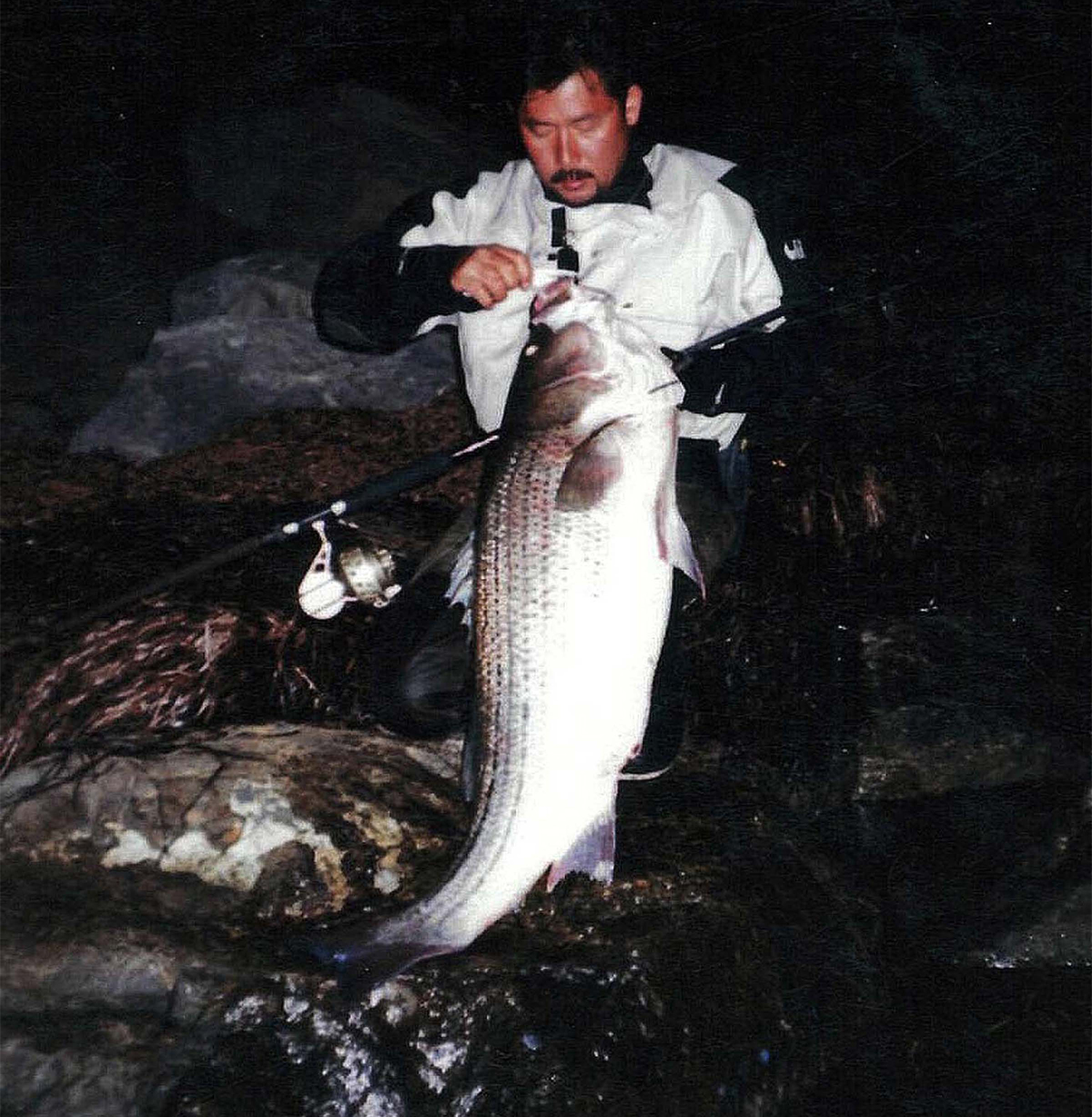
5. OL: What are your 5 top go-to lures?
AK: Striped bass are opportunistic feeders, but the key is to know exactly what they are feeding on. That being said, my go-to lures start with bucktails. I also use metal-lipped swimmers, poppers, and soft plastics. When big stripers are chasing big baits such as menhaden, I also use the Tactical Anglers 3-ounce SubDarters. The options are endless, but it all boils down to the angler’s ability to fish with confidence and with great persistence during the magical windows. Lure size should vary based on seasons, conditions and structures. Making the perfect presentation requires quick changes based on any given situations and time.
Read Next: How to Catch Spring Striped Bass on Live Bait
6. OL: How do I read the tides? What should I be looking for?
AK: This is probably the most important of all because by applying it right, it will take the guessing away and luck out of the equation. Tide is everything because fish move and feed on specific tide phases. In addition, big fish are lazy and opportunistic feeders. Therefore, applying your skills during the slower movement of the tides is optimal. I am basically referring to fishing the first and last parts of the given flood and ebb tides. In the spring and early run, I like the first two hours of the ebb, and in the fall season, the first hour of the incoming. As the weather gets cooler, the last two hours of the flood is optimal. What should I be looking for? You must find ambush spots where fish will stage to feed. That is why points, pockets, inlets, jetties and beach cuts are best.
7. OL: What’s the best bait to use and how do I rig it?
AK: The best bait to use depends on what is swimming and available in present moment. It could be mackerel and herring in the fall season or menhaden in the spring and summer. There are multiple ways of rigging, but it is safe to say, fresh chunks are best. I like to use up to a 10/0 hook with a fish finder rig and use ample weight to keep it as still as possible. It needs to be positioned either in the fish highway or at a feeding point such as a hole, pocket, cut, or point.
8. OL: Circle hooks are mandatory in many states. What do I need to remember when using circle hooks for stripers?
AK: Because I’m old school, I like to cross their eyes while setting the hook. If you do that with a circle hook, you will lose many fish. With circle hooks, allow the fish to run with the bait. Once the line is tight, reel hard and allow the hook to set into the side of the fish’s mouth.
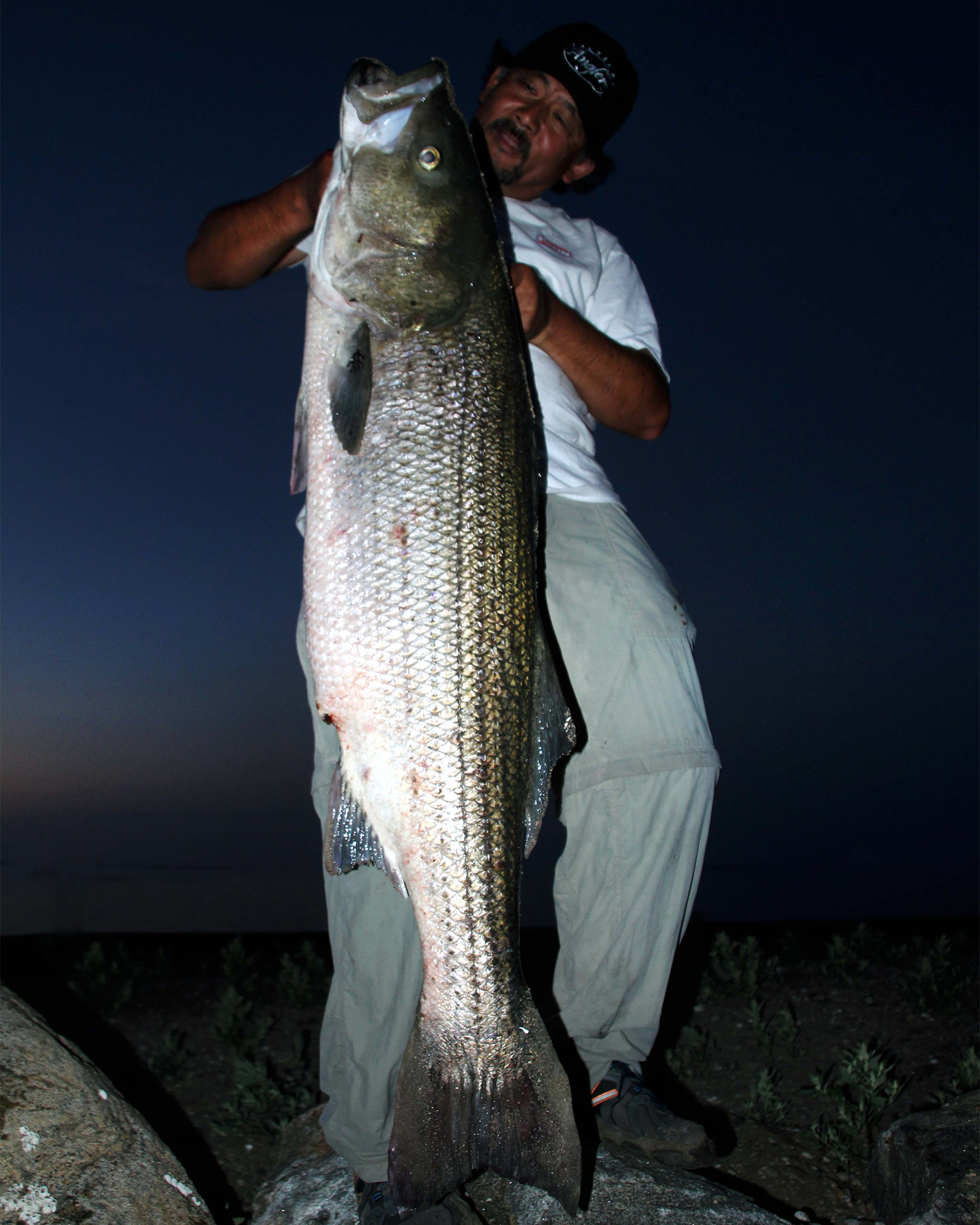
9. OL: What are your recommendations on waders?
AK: Waders are obviously essential in the surf and I’ve used just about every wader brand on the market. I’ve come to like the L.L. Bean waders and their warranty is the best in the field. When it comes down to extreme surfcasting for stripers, a reliable surf top is necessary and can save your life. Be sure to also have a belt—it will prevent water from filling your waders. If jetty fishing is in your plans, be sure to have studded bottoms (corkers) to prevent slipping.
Read Next: Why Greg Myerson is the World’s Greatest Striped Bass Fisherman
10 . OL: What are your 5 favorite places (regions) to surf fish for stripers?
AK: In the spring run, it is safe to say that the New Jersey shore (based on the west winds) is great. Then I’d head to the south shores of Long Island, New York, anywhere from Jones Inlet, Fire Island, Moriches, Shinnecock, the Hampton Beaches, and Montauk Point until July. The migration then follows to Connecticut’s rocky points, Martha’s Vineyard, to the famed Cape Cod Canal, and into many parts of Maine. In the past few years, there have been reports of fish headed to the Canadian borders as well. As the fall run begins, the southern migration begins and Block Island, Montauk Point and the south shore of Long Island are all prime surf grounds. The best conditions are aligned with Nor’easters.
No matter where or when you fish, keep in mind that the fishery is at an all time low. I strongly recommend safe handling of the breeders. Cows need to be treated with great care, and respect during the release process.
